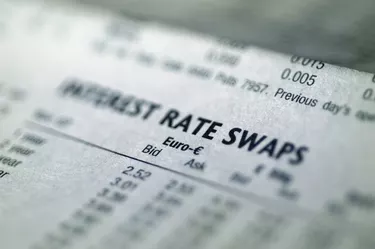
Low interest rates always sound good, but in reality, they can damage the economy, and excessively low interest rates normally are considered to be predictive indicators of economic crisis. Low interest rates tend to cause a rise in asset prices and the cost of living. At the same time, they lower the return on fixed-income investments that provide income for retired individuals, foundations and other entities dependent on bond interest for income.
Risk Investing to Meet Income Targets
Video of the Day
Low interest rates can cause increased risk-taking to meet investment return or income targets. Banks, insurance companies, pension funds, retirees, charitable foundations and educational endowments--all have income targets they must meet using returns on fixed-income investments or loaned money. If they can't meet those requirements, they must cut back their spending or, if applicable, raise their fees. Alternatively, banks can lower their lending requirements and make larger loans to borrowers with poor credit, who expect to pay considerably more than prime rate for their money.
Video of the Day
Asset Valuations Rise to Artificial Heights
Lured by low interest rates and easy lending standards, buyers drive prices on houses artificially high, inflating the lending portfolios of banks with overpriced assets. Other high-priced assets such as art, automobiles and boats also rise in price as more people are able to buy them on inexpensive credit.
Commodity Prices Rise
Low interest rates are an indication of loose monetary policy, which contributes to high commodity prices as lots of inexpensive money chases limited supplies of goods. That results in high food and fuel prices and raises the cost of living even for those not buying houses, automobiles or boats. At the same time, retirees and organizations that depend on bond interest for income find their incomes declining.
Disincentive to Save
If savings accounts return only 1 percent or less, and commodities prices are pushing up the cost of food and fuel, there is no incentive to save money. Consumers need whatever money they have to keep up their standard of living. With incomes not keeping pace with the prices of assets, people tend to use inexpensive credit to purchase food, fuel and assets. Low interest rates are an incentive to spend more than one makes.